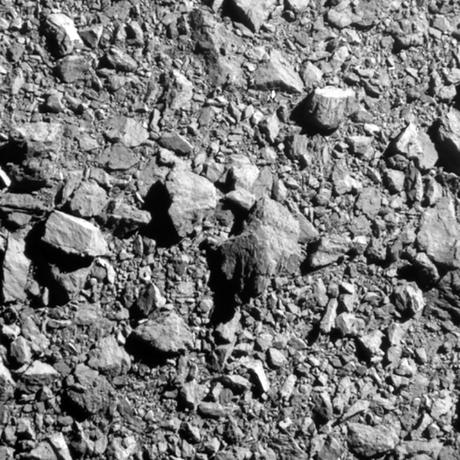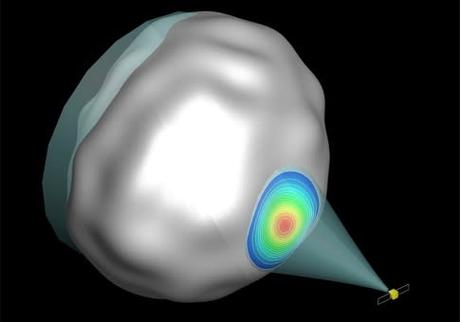In recent years there has been a wave of encounters and collisions with various asteroids. Interestingly, the composition of the asteroid debris clusters was surprising in several cases.
Asteroid probes from several countries have found no solid objects, but numerous pieces of gravel and boulders loosely connected by the object's small gravitational field.
Lately, it was the NASA OSIRIS-REx mission that left bite marks on asteroid Bennu, grabbed and picked up bits and pieces of that mess, and then parachuted those collectibles into Utah last September. Similarly, Japan's two Hayabusa missions returned specimens of the debris, asteroid Itokawa (2010) and asteroid Ryugu (2020), to Earth.
This revelation is spreading through the planetary defense community. How do we deal with incoming space rocks that pose double problems: bad for Earth, but also difficult to deal with because of their composition?
Related: Junk asteroids are 'giant space cushions' that live forever
Go-to technology
The overwhelming success of NASA's Double Asteroid Redirection Test, or DART, marked humanity's first mission to purposefully move a celestial body. After a ten-month journey, DART's kinetic, pinpoint smash of asteroid Dimorphos occurred in September 2022, altering the asteroid's orbital period around its small celestial companion, asteroid Didymos.
"Pre-impact projections estimated a range of possible deflections, and the post-impact observations revealed a significant deflection of the targeted asteroid at the top of the pre-impact models," NASA reports, citing the DART outcome as 'a promising one'. result for applying the technique in the future if necessary."
The kinetic impact method demonstrated by DART has been the "go-to technique of choice" when trying to deflect an asteroid headed toward Earth, said John Brophy, an Engineering Fellow at the Jet Propulsion Laboratory.
"They hit it very close to the center of mass. It was a good shot," Brophy told Space.com.
On the other hand, asteroid debris piles seem to give rise to Forrest Gump's axiom that life is like a box of chocolates: "You never know what you're going to get."
"If you hit it hard enough to deflect it, there's a good chance you'll disrupt it in one hit. And if you dislocate it, it'll blow it apart," Brophy said. What happens next is "a chaotic process with uncertain outcomes," he said.

Controlled process
It's one idea to have kinetic impactors repeatedly hit a target in a kinder, gentler way, but that approach also comes with challenges.
Brophy was a research leader for a new planetary defense idea known as ion beam deflection. "You direct the ion beam to hit the asteroid, along its velocity vector. With the deflection of the ion beam, you spread that force out over months or maybe even a year or two," he said.
There are several advantages to using this ion beam concept, Brophy added. First, it is a very controlled process. It also works on debris piles and it doesn't matter what the strength of the object is, how it is constructed or how the space rock rotates.
Ion beam deflection "is a potentially attractive approach that could help alleviate the problems of debris deflection," Brophy said. He then noted that a nuclear device is of course used for deflection purposes, but that is seen by many as a last resort.
Read more: 8 Ways to Stop an Asteroid: Nukes, Paint, and Bruce Willis


Large dog
Ed Lu is executive director of the Asteroid Institute, a program of the B612 Foundation. As a NASA astronaut, he flew three space missions, logging 206 days in orbit, to assist in the construction and life aboard the International Space Station.
Lu is also co-inventor of the Gravity Tractor, a steerable means of deflecting asteroids, using only a spacecraft's gravitational field to transmit the required momentum. Testing the concept in space in experimental mode is being studied, he said.
From a planetary defense perspective, Lu has long said that deflection is not the hard problem. "It's never been the hardest part. It's always been finding, tracking and getting a full catalog and knowing when something would happen," he told Space.com.
The big asteroid news, Lu said, is the Vera C. Rubin Observatory, currently under construction at Cerro Pachón in Chile. It is expected to excel at detecting new asteroids as the facility will monitor large areas of the sky every night and can detect very faint moving objects.
"It's really the big dog and can make most of those discoveries in the next few years. The first years of its operation are the most productive. Then everything is easy to pick," Lu said.
Governance issues
A recent public poll shows that monitoring the orbits of Earth-damaging asteroids should be NASA's top priority.
"Monitoring asteroids that could potentially impact Earth is at the top of the public's priority list for NASA. Monitoring the planet's climate system is also highly regarded as a priority for NASA. But relatively few Americans say sending human astronauts to the moon or Mars should be a top priority," a Pew Research Center finding reported on July 20.
Dealing with debris piles technologically is one thing, but more work also appears to be needed to sort out the political and sociological aspects of fending off asteroids that target Earth.
Nikola Schmidt works as a senior researcher and heads the Center for Governance of Emerging Technologies at the Institute of International Relations in Prague. He is the author of a recent look at 30 years of planetary defense governance.
"The problem is that we don't know what's beneath the surface of the debris," Schmidt told Space.com. "There could be cavities inside, or the spaces between larger rocks could be completely filled by regolith. This we don't know and could cause significantly different effects. So yes, structure is a problem and about 70-80% of the asteroid population is there it is believed to consist of ruins," he said.
Safety regimes
In Schmidt's article appearing in the January issue of the journal Acta Astronautica, he notes that today we are not in a situation where the Earth could be smoothly defended.
"This is not to say that United Nations bodies, expert entities and the entire scientific community in the field of planetary defense do not communicate and share information." That is true, Schmidt quickly adds, but the fact that states want to retain decision-making in their own hands goes against preparation at the planetary level and the avoidance of unnecessary international discussions in the event of an imminent threat.
"This is why states have developed international cooperation in the form of multilateral security regimes," Schmidt said. "They establish procedures for decision-making that will not be changed as a result of elections in certain states and can provide everyone with security guarantees for unequal contributions, which is crucial for the security of small states and the legitimacy of action for powerful states - each can bear what they can, but all enjoy the same security of cooperation."
Cosmopolitan responsibility
RELATED STORIES:
- How Asteroid Bennu Surprised NASA's OSIRIS-REx Spacecraft, Nearly Killing It Along the Way
- The Chelyabinsk meteor explosion over Russia ten years ago was a wake-up call for planetary defense
- How NASA's OSIRIS-REx mission will help protect Earth from asteroid Bennu and its 2182 flyby
Schmidt told Space.com that he has argued for years that planetary defense is about cosmopolitan responsibility, "which consists of the continued production of new scientific knowledge about asteroids and their orbits. The knowledge changes our perception of the world around us moving through the world. the boundaries of nation states and their power to do anything about them. Therefore, states must find a way to work together, otherwise they will fail to fulfill their main raison d'être: providing security to its citizens."
Cosmopolitan is also not the kind of language sold to the public, Schmidt concludes, "but planetary defense reframes the social contract like everything else in the ever-changing society."
